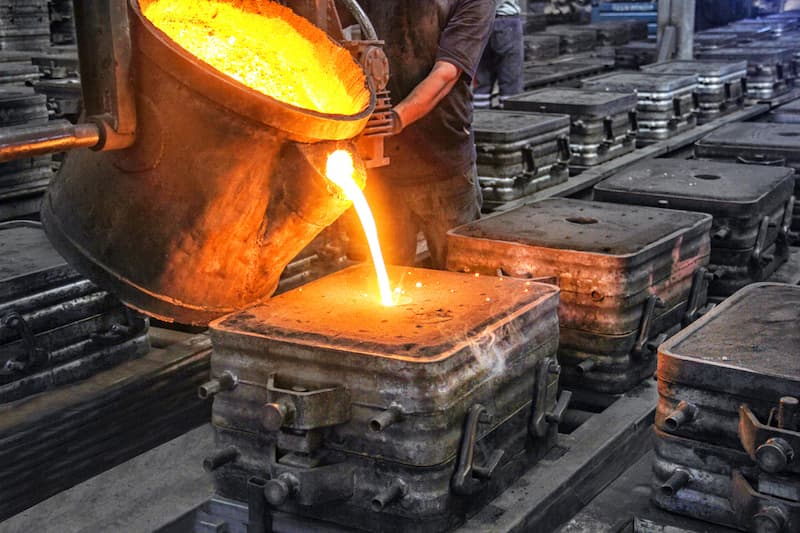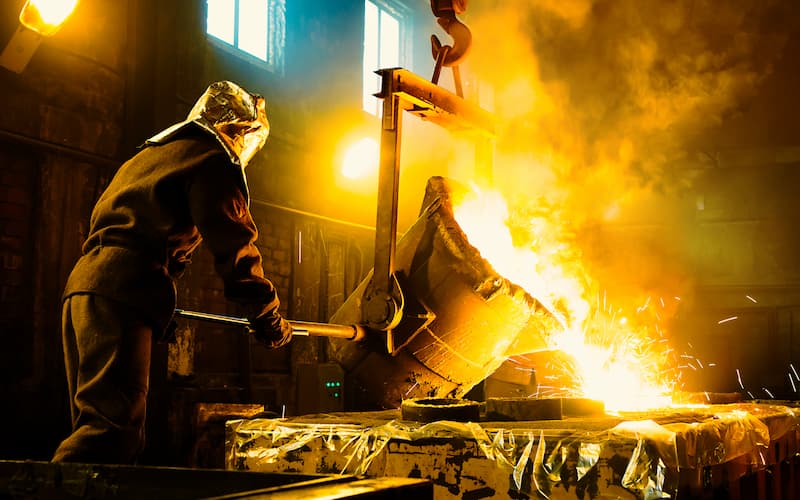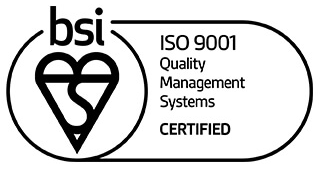A Guide to Metal Casting
Metal casting is a broad field of industrial manufacturing. It creates metal parts out of liquid metal through various manufacturing methods in its broadest sense. As a UK-based foundry, we have decades of experience producing castings, including the ever-popular investment casting method.

What Is Investment Casting?
Investment casting is the current term replacing a much older title, lost wax casting. This manufacturing process creates intricate components out of liquid metal and is one of the most popular processes for creating precision parts. Many sectors rely on high-quality parts created through investment casting, including aerospace, automotive, medical and defence.
Why Choose Investment Casting?
There are several methods for creating metal parts, each with its process and applications. Choosing investment casting offers specific benefits such as:
- High precision and accuracy: It allows for producing parts with intricate geometries and tight tolerances.
- Variety of materials: It can produce parts from a wide range of metals and alloys, including steel, aluminium, and titanium.
- Low tooling costs: The process of investment casting requires relatively low tooling costs compared to other casting methods.
- Low waste and high efficiency: Investment casting is known for its low waste, which results in high efficiency and low production costs.
- Ability to cast complex shapes: It can produce complex shapes that would be difficult or impossible to produce using other casting methods.
- High surface finishes: Investment casting has a high surface finish close to the final product.
- Low labour cost: It has a relatively low labour cost compared to other casting methods.
At Dean Group, we developed an innovative enhancement for our investment casting process, 3D wax printing. Our improved 3D printing investment casting process significantly improves our rapid prototyping service into a quicker and increasingly cost-effective solution for our client’s needs.

The Difference Between Investment and Die Casting
Investment casting and die casting are two different manufacturing processes that are easily confused due to some components with similar names. The most common mistake relates to where the liquid metal is poured.
As previously mentioned, wax is poured into metal blocks as part of our investment casting process to create the needed wax pattern. These blocks are called toolings or dies, but some users may think of them simply as moulds. Whilst all three are seemingly relevant to the process, we encourage increased attention to detail and transparency when describing our processes to our clients, so we choose to call them by the more accurate titles of either toolings or dies.
The die casting name comes from a significant difference in the process at the metal casting stage. For die casting, the molten metal is cast into the dies themselves rather than the alternate moulds we use in investment casting. This significant change of filling dies with liquid metal instead of wax is why it is called die casting. Unfortunately, as both processes use dies as an essential step of steel casting, the confusion is all too easy. Fortunately, our expert team specialises in working closely with our clients to provide honest transparency and a complete image of what is needed for their metal casting.

Are There Other Methods of Metal Casting?
If your application needs metal castings, there are many design considerations to consider to choose the best casting process. Here are some examples of alternative metal casting methods.
- Permanent mould casting: This method uses a permanent metal mould similar to sand casting. It is suitable for medium to high-volume production runs of small to medium-sized parts.
- Centrifugal casting: The mould is spun at high speeds to create a centrifugal force that pushes the molten metal into the mould. Centrifugal casting is suitable for large, cylindrical parts with tight tolerances.
- Lost foam casting: A foam pattern of the part is created, which is then encased in refractory material and heated until the foam evaporates, leaving a void for the molten metal to fill. Lost foam casting is suitable for small to medium-sized parts with complex geometries and tight tolerances.
- Gravity die casting: This method uses gravity to fill the mould with molten metal. Gravity die casting is suitable for small to medium-sized parts with tight tolerances.
- Low-pressure die casting: Low pressure is used to fill the mould with molten metal. Low-pressure die casting is suitable for small to medium-sized parts with tight tolerances.
UK-Based Investment Casting Foundry
Dean Group specialises in producing the highest quality investment castings from our state-of-the-art UK foundry in the North West of England. We also provide a range of other manufacturing services, such as:
With our range of Asia sources, we supply fully risk-managed, low-cost castings in higher volumes. You can also benefit from the range of machining, heat treatment, assembly, and surface finishes our services provide you and your desired application. Contact us to find out how our services can help you fulfil your next project.
Registered in England VAT No: 146307478 Company Registration No: 1062820




